SLAP Lesion (Superior labral anterior posterior (SLAP) tears)
Table of Contents
What is a SLAP lesion?
A SLAP lesion is an injury to the superior labrum, which is a rim of cartilage that surrounds the socket of the shoulder joint. The term “SLAP” stands for Superior Labral Anterior to Posterior, referring to the location of the tear in the labrum.
A SLAP lesion typically occurs as a result of a fall on an outstretched hand, a direct blow to the shoulder, or repetitive overhead motions such as those used in throwing sports. Symptoms of a SLAP lesion can include pain, weakness, and a catching or popping sensation in the shoulder. Treatment may involve rest, physical therapy, and/or surgery, depending on the severity of the injury.
Introduction:
25% of adults will suffer from shoulder pain due to injury or overuse. Superior Labrum, Anterior to Posterior tears (SLAP tears), also termed labrum tears, represent 4%–8% of all shoulder injuries.
The L term in SLAP refers to the glenoid labrum. The glenoid labrum plays two essential roles in keeping the shoulder functioning and pain-free. First, the glenoid labrum is a cushion for the highest part of the upper arm bone. This cushion helps the humerus bone stay where it belongs – fixed in the shoulder socket. Second, the labrum serves as a site of attachment between one of the bicep tendons and the shoulder blade socket.
The S in SLAP refers to the superior part of the labrum. The bicep tendon’s attachment to the shoulder blade socket and the humerus bone’s cushion are both lost when this portion of the labrum breaks. As a result, the shoulder pains and feels unstable.
There are several ways to tear the labrum. SLAP tears are familiar injuries for people who play sports. The labrum can be torn by any injury or simply over time as a person ages.
Some of these tears can be treated with rest and physiotherapy, but some may need surgery.
The word “SLAP” means Superior Labrum Anterior and Posterior. In a SLAP injury, the superior part of the labrum is damaged. This highest area is also where the biceps tendon connects to the glenoid labrum. Both the proximal and posterior surfaces of this attachment point develop SLAP tears. The injury may also have an impact on the biceps muscle.
Superior labral anterior-posterior (SLAP) tears are lesions of the glenoid labrum. These lesion concern the superior glenoid labrum, where the long head of the biceps brachia tendon inserts. They could grow to include the glenohumeral tendons, the tendon, or other labral quadrants.
It is not like Bankart lesions and ALPSA lesions, a person is not usually (20%) associated with shoulder instability.
There are four kinds of SLAP lesions involving the biceps anchor are determined:
- Degenerative fraying with no separation of the biceps insertion.
- Separation of the superior labrum and biceps from the glenoid rim. It is the most common. In younger patients (40 years of age) they are noticed with rotator cuff tears.
- An intact biceps tendon insertion to the bone is present despite a bucket-handle rupture of the glenoid labrum.
- Intra-substance tear of the biceps brachial tendon with a bucket-handle tear of the superior aspect of the labrum. It is the least common.
Cause of SLAP Lesion
Acute trauma or constant arm motion can both cause injuries to the superior labrum. An acute. SLAP injury may occur due to following:
- A motor vehicles accident such as a car or bike.
- A fall onto an outstretched arm or on the shoulder.
- Forceful pulling on the arm, such as when attempting to catch any heavy object.
- Rapid or forceful movement of the arm when it is beyond the level of the shoulder.
- Hyperextension
- Heavy lifting
- Repetitive overhead activities are often seen in throwing athletes
- Fall on the outstretched arm with tightened biceps
- Traction on the arm
- Shoulder dislocation.
- People who engage in repetitive overhead sports, such as weightlifters or throwers, are susceptible to labrum tears from repeated shoulder action.
However, a lot of SLAP tears result from the labrum steadily deteriorating over time. The superior labrum can tear or fray in individuals who are older than 30 to 40 years old, which is a normal part of aging. This is distinct from a young person’s acute harm.
The precise cause underlying the various SLAP tear representations is multifactorial and remains a topic of debate and controversy. However, of the underlying aetiology, patients showing symptomatic SLAP tears will commonly report the acute onset of deep shoulder pain accompanied by mechanical symptoms such as popping, locking, or catching with various shoulder movements.
Acute Traumatic SLAP Lesions
Traumatic injuries typically occur following acute, index events established on one of the following mechanisms:
- Compression-type injuries:
Half of the patients have a history of falling onto an outstretched arm with the arm in varying degrees of shoulder abduction.
- Traction-type injuries:
These occur secondary to sudden jerking movements or after lifting any heavy objects
This can occur after an incredible pull on the arm - Combined-type injuries:
Attritional SLAP Injuries:
Peel-back Mechanism:
Analogized to acute, traumatic SLAP hurts, the overhead athlete is more potential to present with attritional-based causes. In these methods, SLAP tears accompany the insidious onset and progressive deep shoulder pain in young athletes with the arm positioned in the abduction and outside rotation position during the late-cocking phase of throwing. The posterior labrum and posterosuperior quadrant of the glenoid peel off in this position due to the tension exerted on the biceps by the humerus’s posterior glide.
There remains debate regarding whether the so-called peel-back mechanism versus the deceleration phase of throwing is most reliable for the pathologic forces driving SLAP tears in overhead athletes. The former involves the late-cocking phase of throwing, while the latter would theoretically involve more traction-based mechanisms. SLAP tears are more probable to occur with the shoulder in a forward-flexed position than positions in extension.
Degenerative SLAP Lesions:
Degenerative SLAP tears can generate secondary to the normal “wear-and-tear” patterns seen in patients with progressive age. Degenerative SLAP tears usually impact overhead l
Types I – VIII
Type I SLAP Tear
Degenerative
Fraying happens at the free edge of the labrum.
Insertion occurs to the superior glenoid and remains intact.
Type II SLAP Tear
Acute lesion
The labrum and the long head of the biceps tendon (LHBT) are pulled and come out of the glenoid cavity.
The avulsed area is now empty of cartilage in the zone of injury.
Type III SLAP Tear
It is a “bucket-handle” pattern
The labral insertion of LHBT remains unaffected.
Rarest form
Type IV SLAP Tear
These kinds possess Type II shoulder instability and anterior instability.
These include the type III tear pattern and the extension into the LHBT, both of which are typically associated with instability in the shoulder and anterior labral tears.
Type V Slap Tear
It has Type III and anterior shoulder instability in these kinds.
Type VI Slap Tear
The incidence rate is unfamiliar.
The tear pattern affects larger superior labral flaps without separation of the LHBT insertion.
Type VII Slap Tear
Include Type II SLAP tear pattern plus middle and inferior IGHL compromise
A tear pattern is seen in the setting of complex shoulder instability presentations
Type VIII Slap Tear
Type II SLAP tear design in addition to extra ligament injury bordering to the bicipital footplate
Associated conditions:
- Internal impingement
- GIRD
- Rotator cuff tears (usually articular-sided)
- Instability (may be subtle)
- Scapular dyskinesia
Symptoms of SLAP Lesion:
The most usual complaint in patients present with SLAP lesions is shoulder pain. Pain is generally intermittent and often associated with above-head movements. Isolated SLAP lesions are not common. Symptoms are similar to other shoulder problems the majority of patients with SLAP lesions will also complain of:
- The dull, throbbing pain in the joint can be caused by doing simple housework or exerting a lot of effort.
- A sensation of painful locking, popping, catching, or grinding like
- Pain with shoulder movement or with holding the shoulder in such specific positions
- Pain with lifting any objects,
- Pain in the shoulder while doing overhead
- Shoulder pain in certain positions, like raising the arm or stretching the arm behind the head.
- Drop in shoulder strength
- Reduced range of motion.
- Reduced flexibility
- Difficulty in performing normal shoulder movements
- Pitchers may notice a drop in their throw velocity or the feeling of having a “dead arm” after pitching.
- Loss of strength and endurance in rotator cuff muscle.
- Loss of muscle strength and endurance in scapula stabilizer.
- Not able to lie on the affected shoulder. The problem with sleeping is due to discomfort in the shoulder. The SLAP lesion causes the shoulder to drop when combined with bed rest. This causes joint stability to decrease.
- Pain and a feeling of catching are predominant for an athlete participating in a throwing sport like baseball. Throwing athletes may also complain of a failure of strength or significantly decreased velocity in throwing.
- Shoulder impingement and catching sensations can be caused by any involved overhead force or force that presses directly into the shoulder.
- Widespread pain, weakness, or unusual wiggling or movement (instability)
Furthermore, certain individuals with SLAP tears convey that their shoulder continually feels as though jumping out of its socket is about.
Baseball pitchers with shoulder injuries commonly report feeling a “dead arm.” Their pitches clearly show a drop in velocity, as well as a loss of the movement that defines an efficacious professional pitcher.
Diagnosis:
Medical History:
A doctor will talk about the symptoms and when they first began. If a person can remember a specific injury or activity that caused their shoulder pain, it can help the doctor diagnose their shoulder problem — although many patients may not remember a specific event. Any work activities or sports that aggravate the shoulder are also important to mention, as well as the location of the pain, and what treatment, if any, a person has had.
Physical Examination:
During the physical examination, the doctor will check the range of motion, strength, and stability of the shoulder.
A doctor may perform special tests by putting the arm in different positions to reproduce the symptoms. A doctor may also examine the neck and head to make sure that the pain is not coming from a “pinched nerve.”
The results of these tests will help the doctor decide if additional testing or imaging of the shoulder is necessary.
Testing shoulder range of motion:
A doctor will test the range of motion by moving the arm in different directions. For e.g. Shoulder flexion
Imaging Tests may include:
X-rays. X-ray provides clear pictures of dense structures, like bone. The glenoid labrum of the shoulder is made of soft tissue so it will not display on an x-ray. However, the doctor may order to take x-rays to make sure there are no other problems in the shoulder, such as arthritis or fractures.
Magnetic resonance imaging (MRI) scans. MRI can nicely show soft tissues like the glenoid labrum. A dye may be injected into the shoulder before the scan is done to see a tear in the labrum more clearly on the MRI,
Arthroscopy by MR: An MR arthrogram is the preferred method of examination, with estimates ranging from 75 to 90% accuracy, despite the difficulty in distinguishing between subtypes.
- Physical examination: Physical examination can be done by doing special tests. There are two sensitive tests and one specific test is helpful to interpret a SLAP lesion.
Sensitive tests comprise:
- Compression rotation test: The patient is positioned supine with their shoulder 90 degrees straight to the side and their elbow 90 degrees flexed for the compression-rotation test. The scapula is stabilized by lying flat with the back against the examination bench. The humerus is rotated both internally and externally after the examiner applies an axial force to push it into the glenoid. An uncomfortable catching, popping, or snapping feeling results from a good test. This procedure is comparable to McMurray’s test for knee meniscal lesions.
- O’Briens test: The patient is in a standing position, and the arm is positioned at 90 degrees of forward flexion, 10 degrees of adduction, and internally rotated so the thumb points toward the floor. The examiner puts his or her hand over the patient’s elbow while instructing the patient to resist the downward force applied to the arm. The patient’s arm is now turned so that the palm of the hand is facing the ceiling. This maneuver is then repeated. A good test is indicated by pain at the joint line felt during the initial maneuver (palm up/external rotation, thumb down), along with a reported reduction or disappearance of the pain afterward.
- Apprehension Test
Specific tests comprise:
- Speed’s test: A positive test is one in which the patient experiences pain in the bicipital groove while lifting the shoulder forward against the examiner’s resistance. The elbow is minimally flexed and the forearm is supinated during the test.
- Yergason’s test: The elbow is flexed to 90 degrees and the forearm is pronated as the arm is fixed against the patient’s torso. The patient externally rotates their arm against resistance as the examiner physically resists supination.. A positive test is noted if the patient complains of pain over the bicipital groove and/or subluxation of the LHB tendon.
- Biceps load test II: Patients who do not experience repeated dislocation are eligible for the second biceps load test. The patient and examiner are in the same postures as during the initial biceps load test. However, in the second test, the elbow is again flexed to 90 degrees and the arm is supinated before the shoulder is fully externally rotated by 120 degrees. The examiner then pushes back against the patient’s attempt to flex the arm. (movie 5). If the patient experiences pain when flexing their elbow or if the pain worsens when the examiner adds resistance, the test is considered to be positive.
If one of the three tests comes positive, this will result in a sensitivity of about 75%. But if all three tests are positive this will result in a specificity of about 90-100%.
Treatment of SLAP Lesion
For the vast majority of SLAP injuries, the starting management is nonoperative. Nonoperative management modalities include Anti-inflammatory medications, cold treatment including cryotherapy/cooling/ice application, rest, and modification in activities.
Type I tears: It is commonly asymptomatic and does not need treatment
Type II tears: The person needs surgical reattachment
Type III tears: In these, normally need resection of the bucket handle tear
If non-operative treatment modalities do not work, operative management is assumed, while keeping in mind each patient’s age, associated pathologies, functional requirements, occupational demands, and sport-specific goals.
Nonsurgical Treatment
In most cases, the starting treatment for a SLAP injury is nonsurgical.
Nonsteroidal anti-inflammatory medication(NSAIDs): Drugs like ibuprofen and naproxen decrease pain and swelling.
Physical therapy: Specific exercises will revive movement and strengthen the shoulder. Flexibility and range-of-motion exercises will include stretching the shoulder capsule, which is the strong connective tissue that encircles the joint. Exercise to strengthen the muscles that support the shoulder can ease pain and prevent further injury. This exercise program can be resumed anywhere from 3 to 6 months and usually implicates operating with a qualified physical therapist.
Surgical Treatment for SLAP Lesion
The doctor may recommend surgery if the pain does not improve with nonsurgical methods.
Arthroscopy. The surgical procedure most commonly used for treating a SLAP injury is arthroscopy. During arthroscopy, the surgeon inserts a small camera, named an arthroscope, into the shoulder joint. A video monitor displays images from the camera, which the surgeon uses to direct miniature surgical instruments.
During arthroscopy, the surgeon inserts the instrument and small instruments into the shoulder joint.
Because the arthroscope and surgical instruments are narrow. So, the surgeon can use very small incisions (cuts), instead of the larger incision must for standard, open surgery.
Treatment options: There are several other types of SLAP tears. The surgeon will confine how best to treat the SLAP injury once they see it fully during arthroscopic surgery. This may need only removing the torn portion of the labrum or reattaching the torn piece using sutures. Some SLAP injuries do not demand repair with sutures; rather, the biceps tendon attachment is terminated to relieve painful symptoms.
The surgeon will choose the best treatment option depending on the type of tear the person has, as well as their age, activity level, and the presence of any other injuries seen during the surgery.
Rehabilitation after surgical treatment:
At first, the shoulder must be protected while the repaired structures heal. To keep the arm from moving, a patient will most likely use a sling for 2 to 6 weeks after surgery. How long the person requires a sling depends upon the severity of the injury and the complexity of your surgery.
Wearing a sling will protect the shoulder after surgery.
Once the starting pain and swelling have been suppressed, the doctor will start a physical therapy program that is accomplished specifically for the person and their injury.
In general, a therapy program concentrates first on flexibility. Gentle stretches will improve the range of motion and prevent stiffness in the shoulder. As healing advances, exercises to strengthen the shoulder muscles and the rotator cuff will slowly be added to the program. This typically occurs 6 to 10 weeks after surgical treatment.
The doctor will discuss with the patient when it is safe to return to sports activity. In general, throwing athletes can back to early interval throwing 3 to 4 months after surgical treatment.
Postoperative and Rehabilitation Care in SLAP Lesion:
Postoperative Recovery (following SLAP fix) fluctuates as per the kind of SLAP sore, the surgery executed(debridement versus fix), and some other shoulder pathology. Usually, the patient’s shoulder is immobilized for a brief period, followed by restoring motion and, lastly, starting strengthening exercises. What follows is an example of postoperative guidelines for patients who have had a SLAP repair with no associated pathology.
- Weeks 0 to 4 Postoperative:
- Sling immobilization in the shoulder until 4 weeks postoperative
- Earlier shoulder pendulum exercises started, and periscapular muscle activation exercises
- Passive and active-assist forward elevation facilitated may progress limitations depending on surgeon preference.
- Avoid extremes range of abduction and external rotation.

The patient’s shoulder is fixed in internal rotation in a sling. The person is not allowed any external rotation and abduction are limited to 60°. Pendulum and elbow range-of-motion exercises are conducted.
- Weeks 4 to 6 Postoperative:
- Start incorporation of active ROM
- Avoid extremes range of abduction and external rotation.
- Week 4-8 weeks: Stop using a sling, and shoulder motion is improved using active-assisted and passive techniques. Limited external rotation to 30° to decrease strain on the labrum. Internal rotation and external rotation range-of-motion activities are advanced to 90° of shoulder abduction.
- Weeks 6 to 12 Postoperative:
- Functional exercise and light strengthening can be progressively integrated.
- It is ok to start biceps resistance exercises beyond 6 to 8 weeks postoperative.
- Resisted elbow flexion, resisted forearm supination exercise
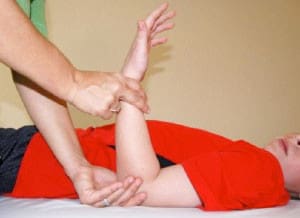
Start resistance exercises, focusing on scapular strengthening, provided acceptable motion has been achieved Approximately 115° to 120° of shoulder external rotation must be achieved before starting scapular strengthening. Resisted activity in the biceps (elbow flexion and forearm supination) is restricted for 2 months to guard the healing of the biceps anchor.
- Week 12 and Beyond:
Advanced strength and ROM exercise, sport-specific exercise
Usual return to sport around 6 months
- Week 16:
Sport-directed throwing program.
These exercises are:
- Forward flexion in a side-lying position
- Prone extension
- Seated rowing
- Serratus punch (protraction with the elbow extended)
- Knee push-up plus
- Forward flexion in external rotation and forearm supination position
- Full can position (elevation in the scapular plane in external rotation)
- Internal rotation placed in 20° of abduction
- External rotation in placed 20° of abduction
- Internal rotation in placed 90° of abduction
- External rotation in placed 90° of abduction
- Forearm supination, elbow flexion in forearm supination
- Uppercut movement (combined forward flexion of the shoulder and flexion and supination of the elbow)
- Internal rotation diagonal pattern
- External rotation diagonal pattern
These exercises, with advancing low to moderate activity, can be applied in the early and intermediate phases of nonoperative and postoperative treatment for patients with proximal biceps tendon disorders and SLAP lesions.
- Week 24: Contact sports are normally started
SLAP lesion repair is often not flourishing, and biceps tenodesis or tenotomy appears to be an acceptable alternative treatment for SLAP lesions. Furthermore, this method has now evolved into the most preferable treatment for unsuccessful SLAP repairs. The signs for biceps tenodesis as the index procedure for a symptomatic SLAP lesion depends on:
- The patient’s age
- Activity level
- Hand dominance
- Type of sport.
If a biceps tenodesis is performed a minimum of 10 weeks is suggested without biceps activity to permit the repaired soft tissue to fully integrate into the bone tunnels.
Complications of SLAP Lesion.
Most of the patients do not undergo complications from shoulder arthroscopy. As with any surgery, however, there are some dangers. These are usually minor and treatable. Possible concerns with arthroscopy surgery possess infection, extreme bleeding, blood clots, stiffness in the shoulder, and damage to blood vessels or nerves.
The surgeon will discuss the possible complications before the operation.
Summary:
The majority of patients who undergo surgery for a SLAP tear report having stronger shoulders and experiencing less discomfort.
The length of time it takes for patients to fully recover varies depending on their health circumstances.
Full recovery could take several months in instances of complicated wounds and repairs. Following your surgeon’s instructions and the rehabilitation plan is essential to a successful outcome, even though it can be a lengthy procedure.
The treatment of SLAP tears relies on the patient’s age, activity level, and tear type. Given the lengthy recovery period needed after surgical repair (typically 6 to 12 months) and the limitations of surgical treatment, especially in older patients, nonoperative management of SLAP tears is recommended whenever feasible. Patients with high occupational demands requiring frequent overhead activity, elite throwers, and overhead athletes should be directed to an orthopedic surgeon. It is best to speak with an orthopaedic surgeon who has experience treating SLAP lesions when receiving such recommendations and whenever surgery is being considered.
FAQs:
What is the most common SLAP lesion?
Type 2 rupture is the most typical SLAP tear. There are several subtypes of type 2 tears, and each one describes a different manner a type 2 tear may manifest itself: Type 1: Your labrum displays evidence of fraying or shredding in this kind of tear but continues to function. People in their middle years or later are more likely to experience type 1 tears.
Is a SLAP tear worse than a rotator cuff tear?
The degree of pain in SLAP injuries and rotator cuff tears can vary. Excruciating pain is frequently the result of a rotator cuff injury, particularly at night. Daily tasks like reaching above the head and holding heavy items may become difficult due to this pain. On the other hand, a SLAP tear can cause a weak shoulder and dull, ongoing discomfort.
Is a labral tear a SLAP lesion?
A labral tear, labrum injury, or SLAP tear are other names for the same condition. Repetitive motions contribute to this injury’s propensity to worsen over time. Age or recent stress are other causes.
Which SLAP lesions require surgery?
Physical treatment alone will typically help people with SLAP injuries that are less severe and involve either a partially torn labrum or frayed labrum. However, surgery is required for complete recovery if symptoms persist after 6 to 12 weeks of physical therapy.
What is a risk factor for SLAP lesion?
Risk factors: The likelihood of labral tears is higher in impact and overhead sports. (SLAP lesions). If an athlete wishes to continue training and competing, surgery is advised. Arthroscopic keyhole surgery is used to repair SLAP lesions through 2 or 3 small incisions.

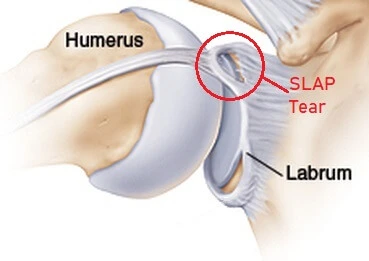
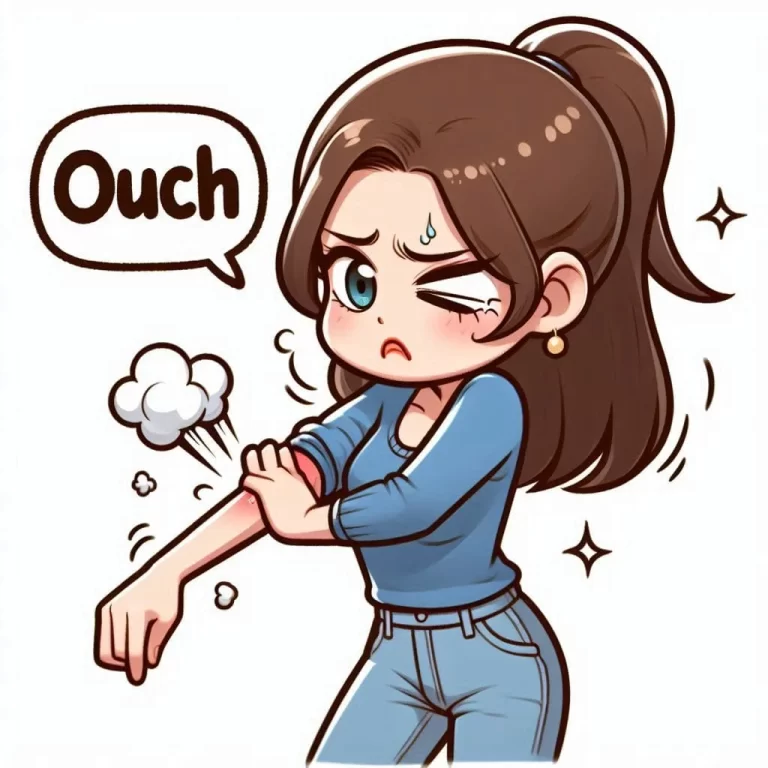
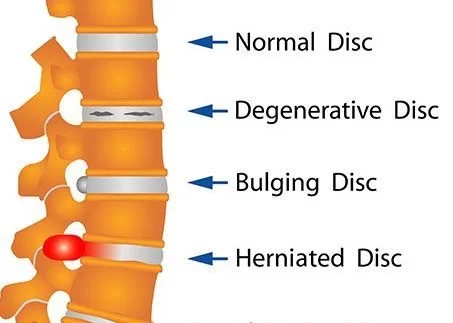
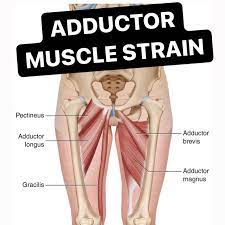
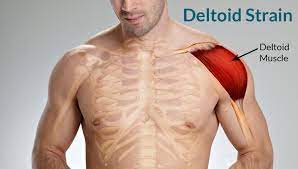
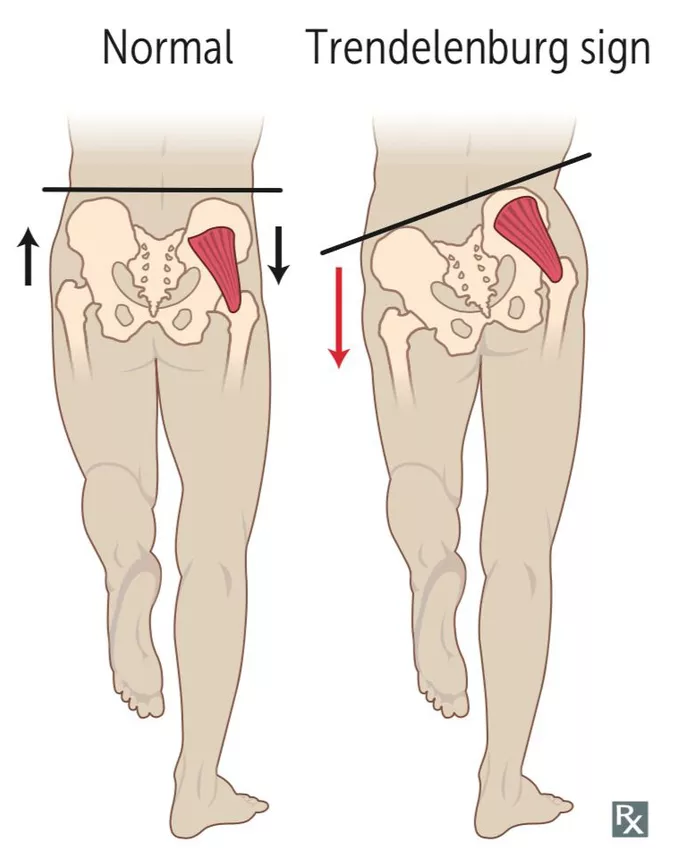
One Comment